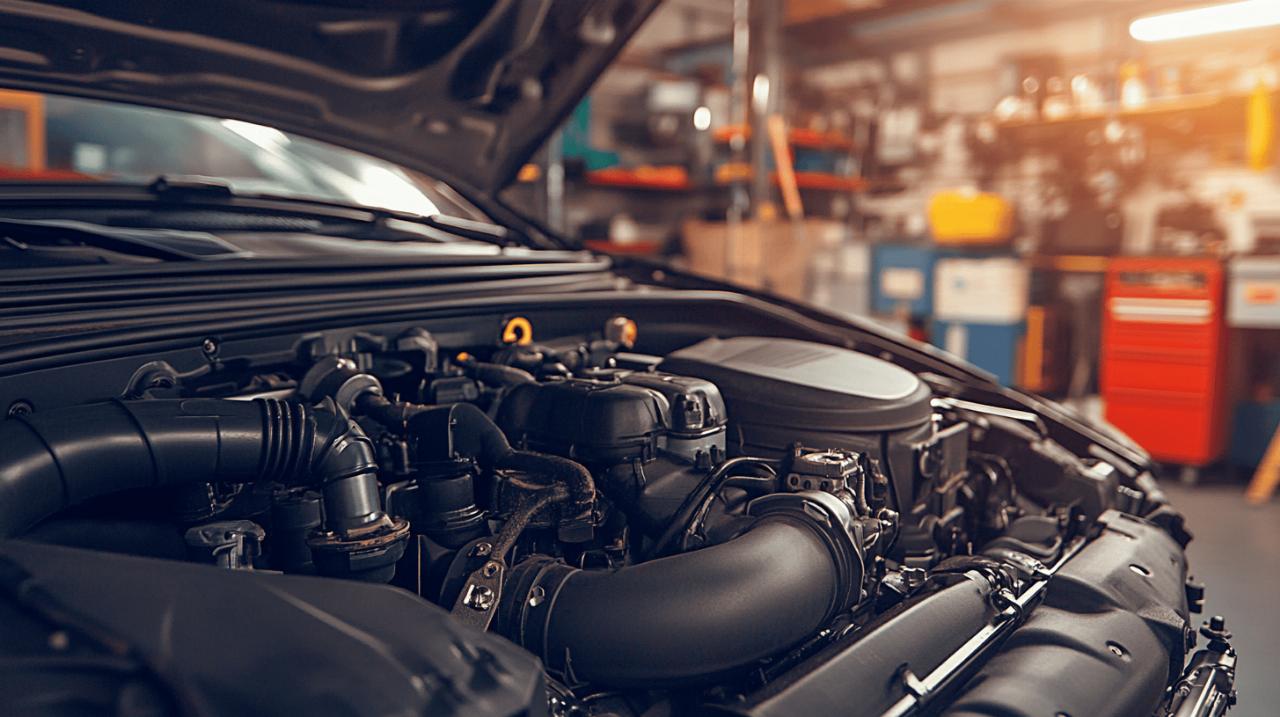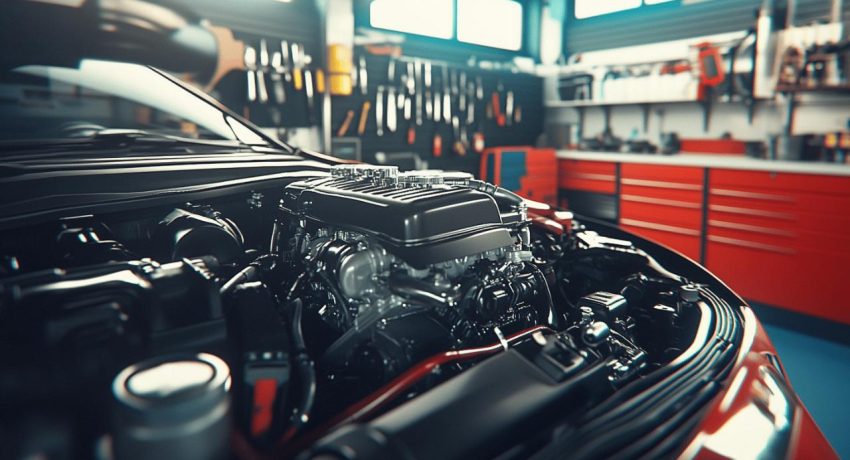Keeping your vehicle in top condition is essential for ensuring its longevity, safety, and optimal performance on the road. Regular maintenance not only helps prevent costly breakdowns but also maintains your car's value over time. This comprehensive guide will walk you through the critical aspects of vehicle care that every car owner should know.
Understanding the Importance of Routine Vehicle Checks
Routine maintenance forms the backbone of responsible vehicle ownership. According to recent statistics, the average car is scrapped at around 14 years old, while the average age of cars on UK roads is about 8 years. This gap suggests that proper maintenance can significantly extend your vehicle's lifespan. Expert automotive websites like motorpublish.it emphasize that consistent check-ups can prevent minor issues from developing into major mechanical failures that could leave you stranded.
Creating a Maintenance Schedule That Works for You
Developing a maintenance routine tailored to your driving habits and vehicle type is crucial. For most vehicles, this includes short-term check-ups performed monthly or every few fill-ups, and long-term maintenance following manufacturer recommendations. Short-term checks should include monitoring oil and coolant levels, inspecting the air filter, checking tyre pressure, and ensuring all lights function properly. Long-term maintenance involves transmission fluid checks, inspecting shocks and struts every 50,000 miles, coolant exchanges, and spark plug replacements.
Signs your vehicle needs immediate attention
Your car will often communicate when something is wrong. Warning signs that require immediate attention include unusual noises, dashboard warning lights, reduced performance, fluid leaks, and steering or braking irregularities. Ignoring these signals can lead to more extensive damage and higher repair costs. When dashboard lights illuminate, professional diagnostics can identify issues early before they escalate into serious mechanical failures.
Tyre care and management
Tyres are your only contact point with the road, making their maintenance crucial for both safety and vehicle performance. Proper tyre care extends their lifespan, improves fuel economy, and ensures better handling in various road conditions.
Proper pressure monitoring techniques
Maintaining correct tyre pressure is fundamental to vehicle safety and efficiency. Underinflated tyres increase rolling resistance, which reduces fuel economy and accelerates wear. Conversely, overinflated tyres provide less traction and can lead to uneven tread wear. The recommended pressure for your vehicle can typically be found inside the driver's door frame or in the owner's manual. For the most accurate readings, check tyre pressure when the tyres are cold, ideally before driving or at least three hours after parking.
Tread Depth and When to Replace Your Tyres
Tyre tread provides the grip necessary for safe driving, especially in wet conditions. In the UK, the legal minimum tread depth is 1.6mm across the central three-quarters of the tyre's width. However, experts recommend considering replacement when tread depth reaches between 2mm and 3mm, as performance significantly decreases below these levels. Regular visual inspections can help identify uneven wear patterns that might indicate alignment or suspension issues requiring attention.
Essential fluid maintenance guide
Fluids are the lifeblood of your vehicle, performing critical functions from lubrication to cooling and hydraulic operations. Maintaining proper fluid levels and quality is essential for preventing engine damage and ensuring optimal performance.
Types of Vehicle Fluids and Their Functions
Your car relies on several vital fluids, each serving a specific purpose. Engine oil lubricates moving parts and helps dissipate heat. Coolant prevents your engine from overheating and protects against freezing in winter. Transmission fluid ensures smooth gear changes. Brake fluid enables the hydraulic braking system to function correctly. Power steering fluid assists in steering ease, while windscreen washer fluid helps maintain visibility. Some newer vehicles also use specialised fluids for hybrid systems or advanced suspensions.
How to Check and Top Up Fluids Correctly
Checking fluids should be done regularly, with engine oil and coolant inspected every two weeks. When checking oil, ensure the car is on level ground and the engine is cool. Use the dipstick to verify both level and quality; clean oil appears amber and translucent. For coolant, only check when the engine is completely cool to avoid scalding, and maintain a mix of approximately 50% antifreeze to 50% water. When topping up any fluid, always use the type specified in your owner's manual rather than generic alternatives to prevent system damage and maintain warranty validity.
Brake system maintenance
The braking system is perhaps the most critical safety feature of your vehicle. Regular inspection and maintenance of brakes are essential to ensure they function effectively when needed most.
Warning signs of brake problems
Your brakes will typically give warning signs before complete failure. Squealing or grinding noises when applying brakes often indicate worn brake pads that need replacement. A pulsating brake pedal might suggest warped rotors, while a soft or spongy pedal could indicate air in the brake lines or a fluid leak. If your vehicle pulls to one side during braking, this might point to a stuck caliper or uneven brake pad wear. Any brake warning light on the dashboard requires immediate attention, as it may signal low brake fluid or a more serious system malfunction.
Professional vs diy brake inspections
While some brake maintenance tasks can be performed at home, the complexity and safety-critical nature of brake systems often warrant professional attention. DIY inspections can include visual checks of brake pad thickness, looking for fluid leaks, and testing brake pedal firmness. However, comprehensive brake servicing, including fluid replacement, caliper rebuilding, and rotor resurfacing, typically requires professional equipment and expertise. Most mechanics recommend a thorough brake inspection at least annually or every 12,000 miles to ensure optimal performance and safety.
Engine cleanliness and performance
A clean engine operates more efficiently, produces less pollution, and typically enjoys a longer service life. Regular attention to engine cleanliness can prevent many common problems associated with build-up and contamination.
Methods for keeping your engine clean
Maintaining engine cleanliness involves both internal and external approaches. Internally, regular oil and filter changes prevent sludge accumulation that can restrict oil flow and increase wear. Using high-quality fuel and occasionally adding fuel system cleaners helps prevent carbon deposits in the combustion chamber and fuel injectors. For diesel vehicles, regular motorway driving helps clear the diesel particulate filter. Externally, gentle washing of the engine bay can prevent corrosion and help identify leaks early, though this should be done carefully to avoid damaging electrical components.
Long-term Benefits of a Well-Maintained Engine
The effort invested in engine maintenance yields substantial dividends over time. A clean, well-maintained engine typically delivers better fuel economy, reducing running costs. It also tends to produce fewer emissions, making your vehicle more environmentally friendly. From a performance perspective, a clean engine usually provides more reliable power delivery and smoother operation. Perhaps most significantly, proper engine care can substantially extend the working life of your vehicle, potentially adding years before major overhauls become necessary. This attention to detail ultimately translates to higher resale value and lower overall ownership costs across the lifetime of your vehicle.








